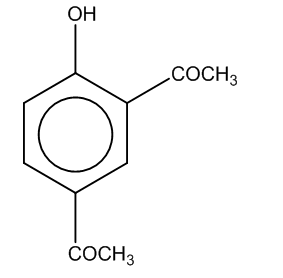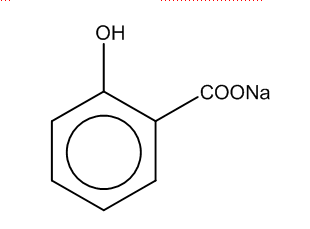
Sodium phenoxide when heated with CO$_2$, under pressure at 125$^\circ$C yields a product which on acetylation produces C.
The major product C would be:

(a)

(b)

(c)

(d)





Answer
224.7k+ views
Hint: This question is based on the concept of acetylation reaction. As we can see in the question that B to C conversion takes place through the acetyl group. This is the Kolbe-Schmitt reaction, so now the product can be identified.
Complete step by step answer:
Now, we will move step by step for this reaction.
As we know, sodium phenoxide is the sodium salt of phenol.
The first step is when sodium phenoxide reacts with carbon-dioxide at high temp, and 5 atm to produce the salicylate i.e.

In the first step, we can see that phenol group is attached to the benzene ring, and COO- group is attached with the sodium ion.
Thus, the product formed in the first step is B.
Now, if we perform the further reaction to attain the product C, then there is a reaction of salicylate formed with the acid i.e. sulphuric acid in the presence of an acetyl group.
Thus, the product formed is

Here, we can see that –COOH group is attached at the ortho position, and the product formed is C i.e. salicylic acid.It is also known as aspirin.
The second step of this reaction is an example of acetylation reaction.
As mentioned the whole reaction i.e. from sodium phenoxide to the formation of salicylic acid is Kolbe-Schmitt reaction.
Hence, the major product formed C is

The correct option is (C).
Note: Don’t get confused while writing the complete chemical reaction, just perform it step by step as shown. There is a difference between salicylate, and salicylic acid. Salicylic acid is formed by the reaction of salicylate with sulphuric acid. So, salicylate acts as a starting material for acetylation reaction.
Complete step by step answer:
Now, we will move step by step for this reaction.
As we know, sodium phenoxide is the sodium salt of phenol.
The first step is when sodium phenoxide reacts with carbon-dioxide at high temp, and 5 atm to produce the salicylate i.e.

In the first step, we can see that phenol group is attached to the benzene ring, and COO- group is attached with the sodium ion.
Thus, the product formed in the first step is B.
Now, if we perform the further reaction to attain the product C, then there is a reaction of salicylate formed with the acid i.e. sulphuric acid in the presence of an acetyl group.
Thus, the product formed is

Here, we can see that –COOH group is attached at the ortho position, and the product formed is C i.e. salicylic acid.It is also known as aspirin.
The second step of this reaction is an example of acetylation reaction.
As mentioned the whole reaction i.e. from sodium phenoxide to the formation of salicylic acid is Kolbe-Schmitt reaction.
Hence, the major product formed C is

The correct option is (C).
Note: Don’t get confused while writing the complete chemical reaction, just perform it step by step as shown. There is a difference between salicylate, and salicylic acid. Salicylic acid is formed by the reaction of salicylate with sulphuric acid. So, salicylate acts as a starting material for acetylation reaction.
Recently Updated Pages
JEE Main 2025-26 Mock Test: Organic Compounds Containing Nitrogen

JEE Main 2025-26 Organic Compounds Containing Nitrogen Mock Test

JEE Main Chemical Kinetics Mock Test 2025-26: Free Practice Online

JEE Main 2025-26 Organic Compounds Containing Oxygen Mock Test

JEE Main 2025-26 Organic Compounds Containing Halogens Mock Test

Sodium acetate on heating with soda lime produce A class 12 chemistry JEE_Main

Trending doubts
JEE Main 2026: City Intimation Slip and Exam Dates Released, Application Form Closed, Syllabus & Eligibility

JEE Main 2026 Application Login: Direct Link, Registration, Form Fill, and Steps

Understanding the Angle of Deviation in a Prism

How to Convert a Galvanometer into an Ammeter or Voltmeter

Hybridisation in Chemistry – Concept, Types & Applications

Ideal and Non-Ideal Solutions Explained for Class 12 Chemistry

Other Pages
NCERT Solutions For Class 12 Chemistry Chapter 1 Solutions - 2025-26

JEE Advanced Marks vs Ranks 2025: Understanding Category-wise Qualifying Marks and Previous Year Cut-offs

Solutions Class 12 Chemistry Chapter 1 CBSE Notes - 2025-26

NCERT Solutions ForClass 12 Chemistry Chapter Chapter 4 The D and F Block Elements

Biomolecules Class 12 Chemistry Chapter 10 CBSE Notes - 2025-26

NCERT Solutions For Class 12 Chemistry Chapter 10 Biomolecules - 2025-26




